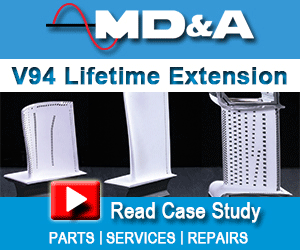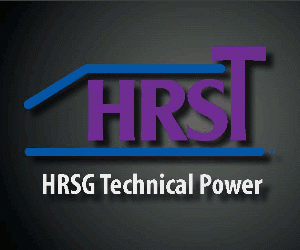Average length of service of the contractor’s employees and the skill levels of the various tradespeople are important qualification metrics, advises Bill Kitterman, GM, Bremco Inc, a recent addition to the SVI family of companies. He recommends that you ask for and carefully review resumes. Contractors worth considering for your work should have them ready for your review without asking, Kitterman says.
In your evaluation, be sure to differentiate between supervisory personnel and crafts. Length of service, formal training, and work experience of supervisors is particularly important. For example, service time is an indicator of the company’s health, quality of management, job performance, etc. At Bremco, supervisors average more than 15 years of company service; crafts about half that.
Pay particular attention to craft skill levels. What codes are welders qualified to? Does the contractor have millwrights, fitters, iron workers, riggers, etc, on staff? Most HRSG work requires all of these skills. In Kitterman’s experience, the more the owner/operator knows about the contractor’s capabilities and personnel, the smoother the planning process and conduct of the actual job.
Quality assurance. Evaluation of supervisory and craft resources are only one part of the due diligence effort. Perhaps just as important to project success is the support staff responsible for quality assurance and safety.
Your QA audit, in the specific case of HRSG work, should focus on knowledge of ASME and NBIC (National Board of Boiler and Pressure Vessel Inspectors) code requirements, experience in code work, welder qualifications, registering of repairs and work, etc.
The QA department and its procedures are particularly important when work involves repair or changes to boiler pressure parts. A plant manager auditing a specialty contractor for such services wants to verify staff capabilities with respect to weld inspection, familiarity with the code, accessibility of staff code experts to field personnel, availability of QA specialists to monitor repair work, etc. Last thing any owner/operator wants is to slow down or halt a job while waiting for a weld-quality verification or a code interpretation.
Kitterman says Bremco has two QA experts on staff—both certified weld inspectors. Note that some welders also are CWIs. At Bremco, QA staff is responsible for maintaining code stamps (National Board “R,” and ASME “S” and “U” certificates of authorization), promptly answering questions from field personnel regarding what the various codes allow and what they don’t, visiting sites where specialty work—P91/T91 welding, for example—requires their expertise, etc.
A quick read of Bremco’s QA procedures points out that the both the company’s QA manager, and the customer, are empowered to establish hold points on boiler and pressure-vessel work to ensure proper procedures are being implemented. Kitterman notes that trust and collaboration between owner/operator and contractor are cornerstones of a successful project.
Important to investigate is the contractor’s experience in making repairs and modifications similar to the ones you require. Where possible, you want to avoid having contractor personnel “learn” on your project. Part of this effort is a review of weld procedures and qualifications specific to the work at hand.
Project reports. Sometimes overlooked, says Kitterman, is the value of complete, orderly paperwork at the project’s conclusion detailing work procedures followed, welder qualifications, identification of welders with specific welds, materials receipt and test reports, quality-control documentation, applicable drawings, etc. All this, and more, should be archived by the owner/operator in support of required registration of work conducted, as well as for insurance and other purposes.
The diligent contractor will file all applicable paperwork as required by regulatory authorities immediately following job completion. Be sure to check that procedures are in place to make this happen. Using HRSG work as an example, repairs to pressure parts require signoff by an uninvolved third party to verify job integrity. One example: An authorized inspector from an insurance company offering boiler and machinery coverage would supervise a hydro test. Upon successful completion of the test, repair forms and other certifications can be filed with NBIC, state/local jurisdictions, etc.
A safe working environment is one of the few things on which all people agree. Plants and contractors take particular pride in having “no lost-time accidents.” This, of course, doesn’t happen by accident: It takes thorough training, testing, retraining, record-keeping, vigilance, management commitment, etc.
A safety audit is an important part of the plant manager’s due diligence effort. You can get a quick read on a particular company’s commitment to a safe working environment by reviewing its safety manual, suggests Kitterman. It should be a living document—one capable of addressing any and all customer and site-specific safety requirements based upon sound OSHA guidelines. Names and contact information for members of the company’s safety committee should be in evidence. Further, committee members should be a mix of management and craft personnel.
A conscientious contractor will perform an initial job-hazard analysis, continues Kitterman, to address site-specific challenges as well as to incorporate any policies required by the plant owner/operator into the project safety plan. In addition, brief daily meetings for contractor personnel are important for communicating unsafe conditions and changes to the existing safety plan. If you don’t see mention of these actions in a prospective contractor’s safety manual that company may not be your best partner.
Also look for words in the manual that openly encourage all employees to monitor their own safety, as well as those around them, and to be proactive. All employees should be entitled to report any unsafe work condition, without reprisal, and if need be to stop the situation until the area can be made safe.
Next, carefully check safety training records. At a minimum, all field personnel should be current on OSHA-required training. Ideally, the contractor should have someone on staff capable of teaching the standard 10- and 30-hr OSHA courses to employees and also be able to conduct or supervise other required training—such as forklift operation and confined-space working practices. Latter includes training to pass the so-called pulmonary function test, which qualifies workers to use a respirator and work with it.
If your site and/or project have specific safety requirements, verify if contractor personnel are already so trained or will require additional schooling prior to job start.
Review of government and insurance records can offer an objective assessment of the candidate contractor’s safety performance. For example, companies are required to log work-related injuries and illnesses on OSHA 300 forms and maintain that file. The Experience Modification Ratio (EMR) is another index to check.
EMR, an industry factor used in Workers’ Compensation Insurance, is based on an employer’s claim history and determined by the claims paid and reserved in the previous three years along with the audited premiums paid. It is considered a fairly accurate reflector of a company’s safety record, and is often used as a factor for prequalification by during a project’s bidding process. An index of more than 1 is indicative of a poorer-than-average safety record; below 1, better than average.
Audit of general administrative procedures is important, too. Review procedures for purchase and delivery of job materials as well as for documentation archives. You’ll also want to know the contractor’s job-costing procedures—including the development of line-item budgets and schedules.
Keep in mind that a contractor’s ability to continually track project cost is invaluable for on-the-spot evaluation of changes in work scope. Kitterman says Bremco can tell you at 10 a.m. what was spent on your project three hours earlier. Contractor also should have the ability to track job performance by line item so you always know where you stand.
Further, a proactive company culture that supports regular morning and evening progress meetings is important. It helps ensure that schedule impacts (positive or negative) are communicated to both contractor and customer personnel. These meetings guard against the “ah shits” that can adversely impact project cost and schedule. With the proper personnel present, they also are a convenient forum for signoffs on change orders.
Flexibility in invoice format and in providing the backup documentation required by the customer is another subject to discuss.





